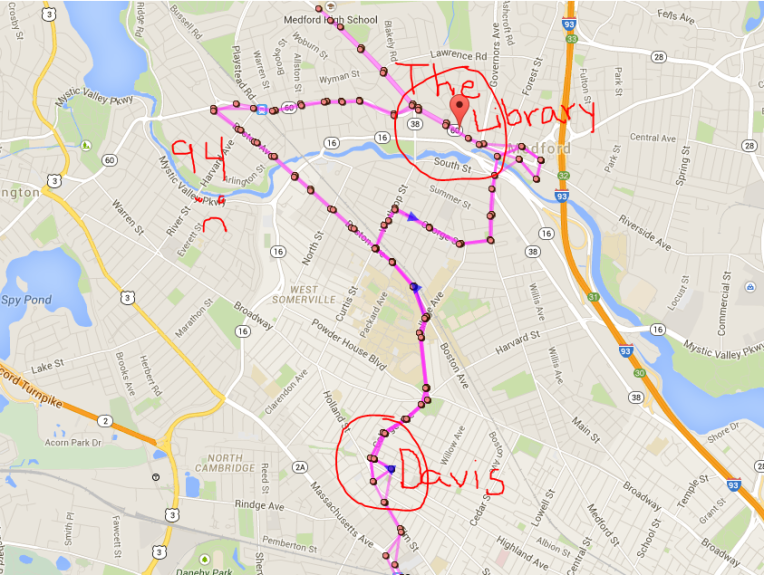MEDFORD
March 25, 2015
This is the first picture I took just for Instagram.
It was last May. I was on my way back from a pop culture conference in Calgary. Prior to and throughout that trip, I had been casting around for some kind of writing target. I’ve written before about how, when I first undertook writing for its own sake, I found I had nothing to write about except my big stupid feelings, either my sorrow over the death of my cat Peanut or my shame and rage about failing on the academic job market. And whatever I produced on either of those topics was usually all choked up, either with sentimental garbage about how one special cat taught me how to love or a bunch of melodramatic whining about how stupid I’d been. I needed to open things up, I needed to think about something else. I read books about the writing life. I read Stephen King’s On Writing and Ann Lamott’s Bird by Bird. I felt better. I could look around me and see things to write. I could look up and feel inspired by airport architecture. But I lacked direction. Nothing was adding up.
At the pop culture conference in Calgary, I went to a panel about graffiti. I can’t remember much about any of the projects presented, but I do remember being struck, hard, by the idea that people often use graffiti as a way to inhabit a space, if only for the time it takes to tag a stop sign. It made me think about what can happen when we’re mindful about being where we are (with or without spray paint.)
It’s funny, because I have no interest in graffiti-ing anything, and though I’ll occasionally stop and take notice of a particularly vivid or weird piece of graffiti, more often than not it just joins the mass of visual city noise. But this panel on graffiti helped me to articulate something that I’d only been intuiting since I started casting around for a writing target: as I walk across the Smoot Bridge, or past the S-Curved steps on my way to Davis, or along the Mystic to the library, as I look up and across the many rooftops that jump out in sharp relief against the bright blue sky, I dig into where I am and I find sources for things I might say. Where I live can be a writing target…but how to begin?
Instagram. Really. Graffiti led me to Instagram, a platform I had avoided and scoffed at ever since I learned of its existence. Just eat your food, people! Come on! But, sitting in that Sheraton conference room, taking in the array of graffiti images captured in cities, small towns, and on railway cars, I realized that with Instagram I could capture images of my own. I could accumulate a stylized portfolio of visuals that hit me somehow, and then maybe I could figure out how to write about them. I could even use the captions to take notes for later.
So in May, I started using Instagram.
post continues after images
https://instagram.com/p/pSMExsC07B/?taken-by=rtbhive
I was taking pictures of everything. By November, I was ready to find a picture to write about.
The colors and layers of this Meow Mile pic really grabbed me, and it turned out to be a useful way to introduce the characters in my life: Tim, Iris, Lateegra, and the idea of Peanut (whose love taught me how to….yuck, you get it.) My Meow Mile was my first post, written before I really knew what this blog was going to be. What it lacks in coherence I think it makes up for in cuteness…a cheap trick, to be sure.
The point of all this: In a nutshell, winter kills the muse. My Instagram has been running on fumes for months. We’ve got a few pictures of the inside of my house, or a selfie of me in a unicorn horn (because, one must!) but otherwise, just nothing. Nothing I see makes me want to write. And the longer I go without writing, the harder it is to write. In desperation, I went back and read my earlier posts — cringed a bit, copy-edited some — and generally embarked upon a labyrinthine meta adventure, thinking about thinking about writing this blog.
— Rebecca Thorndike-Breeze























